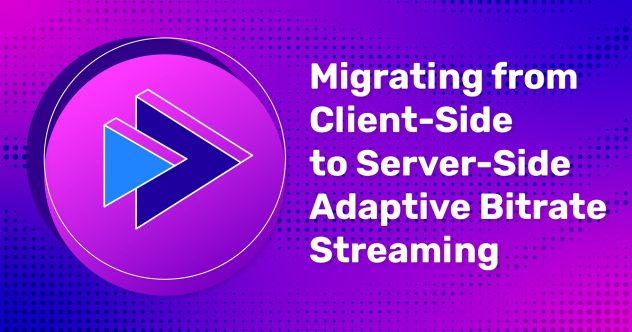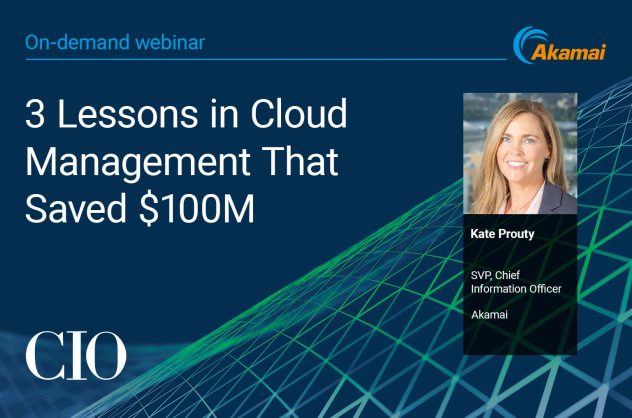 9回目のデータセンター "東京2" の開設を発表いたします。この地域の Linode キャパシティは追加の需要が高まっていました。その需要への対応を開設することに興奮しています。
9回目のデータセンター "東京2" の開設を発表いたします。この地域の Linode キャパシティは追加の需要が高まっていました。その需要への対応を開設することに興奮しています。
東京2は、当社の他のデータセンターとして、すべての機能とサー東京2は当社の他のデータセンターと同じ、すべての機能とサービスを Linode 標準価格で提供しています。東京2 への接続は可能な限り高い帯域幅と最小の遅延を確保するために、ピアリングとトランジットプロバイダ(今後より多くの)の細かいブレンドを備えています。
他のデータセンター(東京1を含む)にLinodesをお持ちのお客様が Linode を東京2に移すことを希望する場合、新しい施設にクローンを作成することができます。DNS レコードを変更する前に、新しい IP アドレスにサービスをステージングできるため、クローニング方法をお勧めします。一方、サポート チケットを開いて移行を構成することもできます。
新しい Linode の場合、Linode を作成する際にロケーションとして"東京2" を選択します。









コメント (68)
That is really a good news for those in Mainland China, as the Tokyo datacenter could be a great choice for them.
It’s really a good news to me, I have been waiting such a long time!
Is KVM available on Tokyo 2? Now that Tokyo 2 is open, will KVM become available on Tokyo 1?
Are the bandwidth and latency conditions the same on the two Tokyo sites?
At this time KVM is still not available in Tokyo 1, and we don’t have any announced plans for such changes at the moment. KVM is however available in Tokyo 2. Outside of that, everything else should be the same. You can run tests to each of the datacenters with the links from our speedtest page here: https://www.linode.com/speed-test
Thanks a lot! It’s very exciting to hear this. Hopefully the upgrade option for Tokyo 1 users will be available soon.
Hello,
Please check IPv6 for the speedtest address, currently it resolves to 2400:8902::f03c:91ff:fe16:ffaa, and it’s not reachable.
Thanks!
Tokyo 1 is at capacity and we have no plans to add any additional. You will need to move out of Tokyo 1 for plan upgrades, KVM, newest hardware, and so on.
@rm – thanks for the heads up. It was fixed earlier today.
Great news!
Is anyone form Linode perhaps able to comment on whether or not your expansion plans for next 12 months include a datacenter in Australia?
Thanks!
A simple question:
Can we access to Tokyo 2 from Tokyo 1 via LAN?
@Black Lee: No, the two facilities are not on the same LAN.
@Nemanja – thank you. I’m sorry, but no – an Australia DC within the next 12 months is unlikely.
@Black Lee – You can not; they are two distinct networks. You’ll need to go through the WAN (the Internet). We have great peering between tokyo1 and tokyo2, with only 3 milliseconds RTT.
Can I move IP address from Tokyo1 to 2?
Good news, but the speed is slower then Tokyo1.
So Toykyo 1 won’t have upgrade in future ?
If I need upgrade I have to move to Tokyo 2 ?
Thanks !
Yes, you will need to migrate to Tokyo 2 to receive our latest hardware and upgrades.
How is connectivity for China?
Considering the distance, the connectivity should be fairly good. You can test this for yourself at our speedtest page: https://www.linode.com/speed-test
Are the CPU specs the same for Tokyo 2 as they are for Newark?
I live in Korea.
I used to use the Tokyo2 server for 3 days.
In conclusion, I am really disappointed. It’s really slow.
On the contrary, the existing Tokyo1 server is much faster.
I wonder what other asian areas are like.
In Korea, the Tokyo2 server is the worst.
Average ping is 80 to 90 ms
However, from evening to night, ping was increased from 300 to 600 ms.
For reference, most of the servers hosting servers in Korea usually guarantee about 10 to 20 ms.
Anyway, I was really disappointed.
The Tokyo2 server is only a server for Japanese people.
Eventually, the Asian user will not use linode.
@Korean User
You should not be disappointed because Linode announced their upstream networks and provided speedtest file & traceroute/ping addresses before opening Tokyo2 datacenter to service. You should not be surprised if you understand anything from networking.
They did not promise more than can be delivered. Please be fair.
They also said that they will add more transit providers, you should be patient because link activation takes more time with some providers.
Hi,
I’m sorry cuz comment this post. But same reason @Korean User posted. Server SG always lag (high ping) sometime on day. My country time 6:00 – 11:00 PM ping up to 57 -> 230. I dont know why! Im used Linode service just 2 years ago.
Sorry about my eng!
The Internet is the fastest country in korea.
I wonder why linode made the Asian server in Japan.
Earthquakes occur frequently in Japan.
For this reason, Japan is unable to establish a stable service in Asia.
Move Asian servers to Korea right away!
My linodes still stayed in Tokyo1 as well because latency issue:
MTR(Taiwan –> tokyo1): 35 ~ 40ms
MTR(Taiwan –> tokyo2): 75 ~ 80ms
There looks still some room to be improved;
yet, the Doubled-RAM and KVM are so attractive… 🙂
@Korean User
Korea is not a digital hub country. That is why CDNs do not setup POP there. I guess next asian Linode city would be hong kong or osaka,JP.
Keep in mind that fastest eyeball networks do not always attract content networks because those eyeball networks always request highest interconnect /transit prices from CDNs to balance their expenses of providing highspeed internet access for cheap end-user prices…
Tokyo 2 use NTT while Tokyo 1 use KDDI which is mach faster.
MTR(Beijing–> tokyo1): 80 ~ 100ms
MTR(Beijing–> tokyo2): 150 ~ 230ms
Tokyo 2 has really, really bad packet loss to China Telecom during peak periods (20%-50%). This causes completely unacceptably slow speeds. China Unicom is okay though, with reasonable latency too (~90-100 ms).
I understand that due to the location of the datacenter adding transit providers like IIJ might be difficult. But I see that you do buy transit from PCCW. Would it be possible to route traffic to Mainland China (especially China Telecom) over PCCW instead? PCCW is typically much better for China Telecom; even without their premium direct China option packet losses are never nearly as bad as that of NTT.
There is currently a physical network issue with the undersea cables, when that is fixed the connection for Tokyo2 should improve:
https://status.linode.com/incidents/8hr00gyqtnjk
@Korean User 지진 발생 위험때문에 한국에 설치해야 한다는 것은 너무 설득력이 없어 보입니다.. 그리고 한국이 인터넷 속도가 가장 빠른 나라는 한국이 아닙니다. 몇년 전에 이미 다른 나라에게 역전당했습니다..
Good news!
I wonder is there a expansion plan in Korea within next 12 months? Cloud server services in Korea are too expensive and poor performance. 🙁
Thanks
Connectivity from China is excellent here, 80ms compared to 100ms on Tokyo 1, and consistently saturating my home bandwidth on speed tests. That’s on China Telecom.
On another note, I think the wording in the article is misleading with regards to the migration method, and the same wording was just used in an announcement email: it is *not* possible to request a migration from Tokyo 1 to Tokyo 2, only the cloning method is available, due to the change from Xen to KVM.
@john doe: I know about that; but even before that physical issue appeared, China Telecom had poor connectivity to NTT; in fact it was even worse. Perhaps the physical issue is a new cable though? (thus even a broken new cable is faster than before) I couldn’t find information on a cable problem with any Asian submarine cable other than the LInode status update though.
@li: That’s very good to hear. Which part of China are you in? Are speedtests consistently fast? From my server in China (China Telecom in Beijing, sitting in a datacenter rather than residential), it does seem that latency is good, but there are hours-long packet loss spikes that destroy bandwidth. But Tokyo 1 is still much better from my location: 50ms vs 80-100ms for Tokyo 2.
@korean user 2: Latency to Japan from Korea is extremely good, so there is probably little demand for servers specifically in Korea. A very large proportion of Korean traffic is actually routed through Tokyo.
@john doe
I would say the connectivity is horrible in Australia, China and even HK. In Australia you are looking for a MTR=220ms in Tokyo 2 while the value is only ~110ms in Tokyo 1. In China and HK, you are looking for a 30%+ package dropping rate which is apparently unacceptable. In short, stay in Tokyo 1 if you can.
The tokyo 2 is much slower than tokyo 1 by the speedtest page downloading test for me. I guess I’ll just waiting for tokyo 1 to be upgraded.
@Lau Bun-sim: That’s from Shanghai
Very consistent, mtr announces 0.2% loss in the last 6 days
To be more precise about the numbers I gave:
Latency – Tokyo 1: 100-120ms / Tokyo 2: 60-80ms
Hops – Tokyo 1: 20-22 / Tokyo 2: 14
Bandwidth: Tokyo 1: 300 KB-7 MB / Tokyo 2: 6-10 MB (testing every 2 hours during 5 days)
Hey Korean User, if you know almost all outgoing connection from Korea to oversea connection routes through Japan or Hong Kong, you’ll probably cry lol.
And local ISP sucks when it comes to peering. (Cloudflare has a blog entry complaining about KT’s insane peering policy but I won’t link it.) If you require fastest speed, just use AWS’ Seoul offer or live with this speed.
In asian countries, CDNs may have bad performance to some prefixes, while having great performance to some other prefixes. This happens due to hot-potato routing used by Transit providers and also local operators’ congested networks…
The only way to solve this problem is to add more transit/peering networks and use Intelligent BGP automation that measures latency and packet loss. For example: https://www.noction.com/ -OR- http://www.internap.com/network-services/miro/
Dear Linode,
Can you choose HongKong to next Location update? I really really love that network xD.
@li I’m actually in Shanghai currently and can confirm that behavior. I suppose the packet loss is a regional issue with Telecom in Beijing though.
@doe Packet loss in HK is negligible and latency very low (30-40ms). In fact it’s better than Tokyo 1 since Tokyo 2 directly connects to PCCW, the largest ISP in HK. HK and China are completely different worlds when it comes to Internet routing.
Australia is bad, sure, but the Internet sucks in Australia in general. The one to blame is Telstra, not Linode.
I guess next location would be Equinix Hong Kong, with access to more than 85 networks. It may provide better service to China mainland
Most networks usually go for Singapore, Tokyo and Hong Kong triple in Far East.. Osaka , Seoul and Taipei are also common for further expansion.
For more than one reason, I think other readers of this blog should know what it is that Korean User2 said to Korean User in an earlier comment. So I translate:
“It isn’t particularly convincing to cite a risk of earthquakes as a reason for locating in Korea. And Korea is not the country with the fastest Internet speeds. It was overtaken by another country a few years ago.”
Whatever the accuracy of that last bit, I’m watching as I write this the public service ad shown daily at the opening and close of broadcasting in Korea in recent weeks, advising the population what to do in the case of an earthquake, like the 5.1 and 5.8 events recently near Gyeongju or the 4.8 event near Ulsan in the summer.
But, as others have pointed out, this is not really an issue either of plate tectonics or of network speeds within a country. It’s a question of international transit provision and there’s no reason why Linode shouldn’t in due course manage to get improvements in that area for Tokyo 2, as it has repeatedly done with other centers in the past.
In my dreams, I would love Linode to have a datacenter in S.Korea so I could have a server presence on the Korean side of those transit bottlenecks. But realistically, it’s hard to see a streamlined, shallow-hierarchy, highly flexible and innovative outfit like Linode negotiating any sort of deal with Korean official or commercial bodies of the sort needed to set up a DC there. “어려울 것입니다” I can hear the Korean parties saying at every stage. Google Translate will tell you that means “That would be difficult”, but its real meaning is “no way, forget it, go away…”, things that everyone who lacks a Korean ID number and a Korean bank account, no matter how well-disposed they are towards S Korea and its people, eventually grows weary of hearing.
Not sure citing a 5.8 event counts much against Korean User2’s argument – wobbles of that size would certainly get one out of bed here in Japan, but not for long. (Of course there are lots of factors behind how much damage a quake actually does – but a 5.8 would do quite limited damage, even if shallow and close.)
Nice to see that Korean has an equivalent for “musukashi desu ne…” (“It is difficult”). But is it really impossible for foreign companies to set up in a data centre in S Korea?
Tokyo 2 seems to have a slower ping on the speedtest server than Tokyo 1.
I am averaging about 186 ms on Tokyo 1 and 256ms on Tokyo 2.
Any plans for India ?
@Nick May Yes. S.Korea gov has strict and stupid regulation for foreign companies.
Tokyo area will have over 7 earthquake soon that most Japanese people are well aware.
Great job Linode team, looking for more at Hong Kong.
Tokyo2 has excellent peering for Taiwan users.
Especially when connect from SeedNet/NCIC ISP, only 30ms during non-peak hour such as midnight, which is incredible latency for connecting to JP…
please post updates which carriers will be added to Tokyo2 and when?
>> 2016 Nov 25
>> My linodes still stayed in Tokyo1 as well because latency issue:
>>
>> MTR(Taiwan –> tokyo1): 35 ~ 40ms
>> MTR(Taiwan –> tokyo2): 75 ~ 80ms
^^^^^^^^^^^^^^^^^^^^
Update Jan 04:
MTR(Hinet –> tokyo1): 35 ~ 40ms
MTR(Hinet –> tokyo2): 35 ~ 40ms (Most routes looks so)
Thanks Linode.
^^ Thats awesome.It seems like they started using Tokyo1Tokyo2 peering links to reach more transit providers at both sites. Keep up the great work.
I hope Linode soon open a datacenter in Indonesia and accepts payment through a local bank transfer. 250 million population of Indonesia is an attractive marketing targets.
I was expecting Tokyo linodes for long time, but Tokyo 2 does not satisfied me as Tokyo 1 did. The download speed is less than half of Tokyo1 from Beijing China which makes it not the best choice for Chinese users as before.
@thwutype I think your update deserves re-inforcing here. The improvement on Tokyo(2) Korea wtih the upgraded peering is really dramatic. Right now I am seeing 38ms Tokyo2 to Seoul, compared to 107 ms to Seoul from my Singapore Linode at the same time.
That’s as good as I, for one, need. I can stop wishing Linode would establish a Korean DC, and I’m relieved that those splendid Linode folks have given us such connectivity without needing to wear themselves to a frazzle trying to get an outpost in the Hermit Kingdom…
I forgot.
Here is South Korea.
@Mawan Linode is available in Singapore & Japan for Asian customers yet I don’t think they accept SDG or JPY. Also seems like you’re using DO for your blog, why not migrate to Linode since it offers more resource compared to DO?
When will Tokyo 1 been available to upgrade to KVM?
@Draven: it will not be. Tokyo1 is full, and you must move to Tokyo2 to get all of the new benefits.
Hi, should I use this Datacenter for site for New Zealand market? I could not check speed test because I’m not from nz. Thanks
It’s KDDI’s Data Center and your server?Search is Japan Tokyo linode.com kddi.com.
When will there finally be a DC in Amsterdam? I love Linode but I really would like to host stuff in Amsterdam (legal requirements). Is the only reason I still needs to host more at DigitalOcean.
Also results in shorter peering, DigitalOcean (Amsterdam) vs Linode (London) https://img.frl/xfg6s
Hey Mike. No plans for an Amsterdam DC right now, but it’s a possibility for the future.
Have you tried our Frankfurt DC? You might have less latency there.
When will you start a datacenter at Bangalore ?
We don’t currently have any plans for a datacenter in Bangalore but are always listening to our customer’s suggestions. Stay tuned to this blog for more updates.
When datacenter in latin america? Argentina, Brasil?
Hey there! At this time we have nothing to announce in terms of new datacenters. When we have more to say about that sort of information, though, we’ll be posting about it here on the blog!
Hi,
Any news on a Hong Kong data center?
Cheers!
65ms from Shenzhen China Unicom!
Does anyone know which datacenter exactly they’re using?